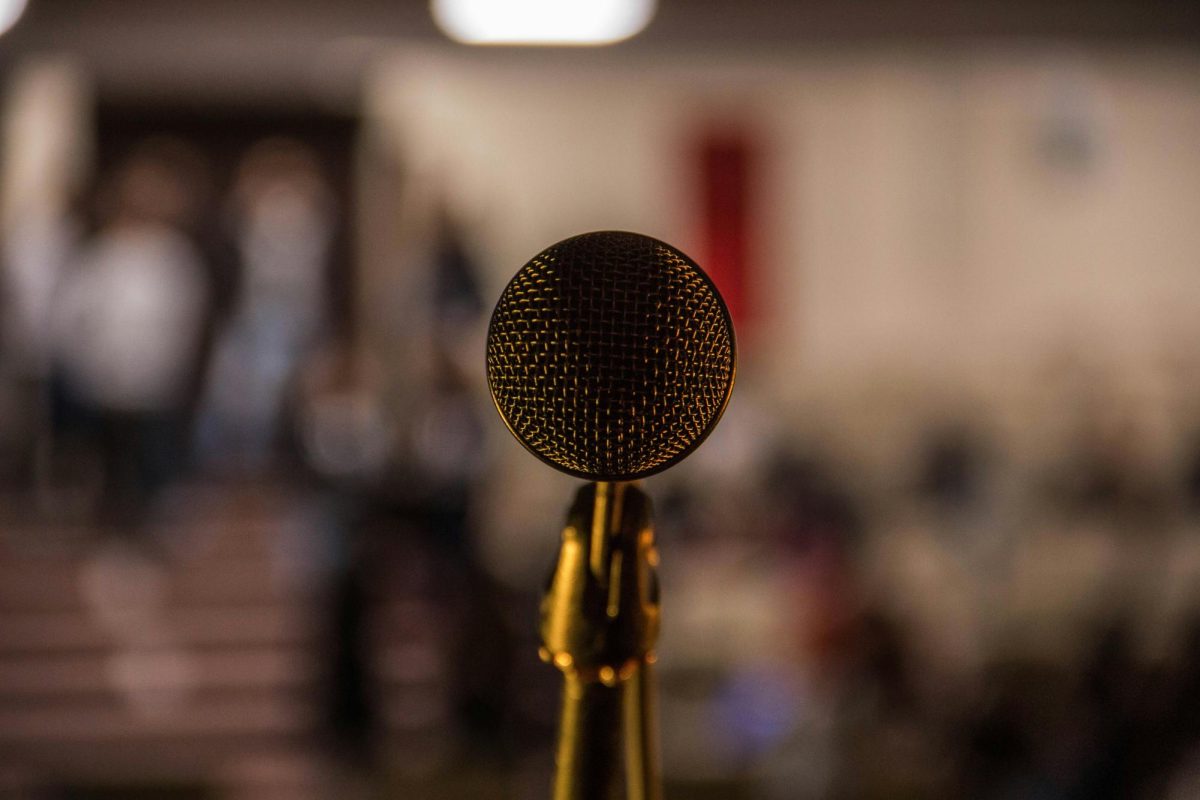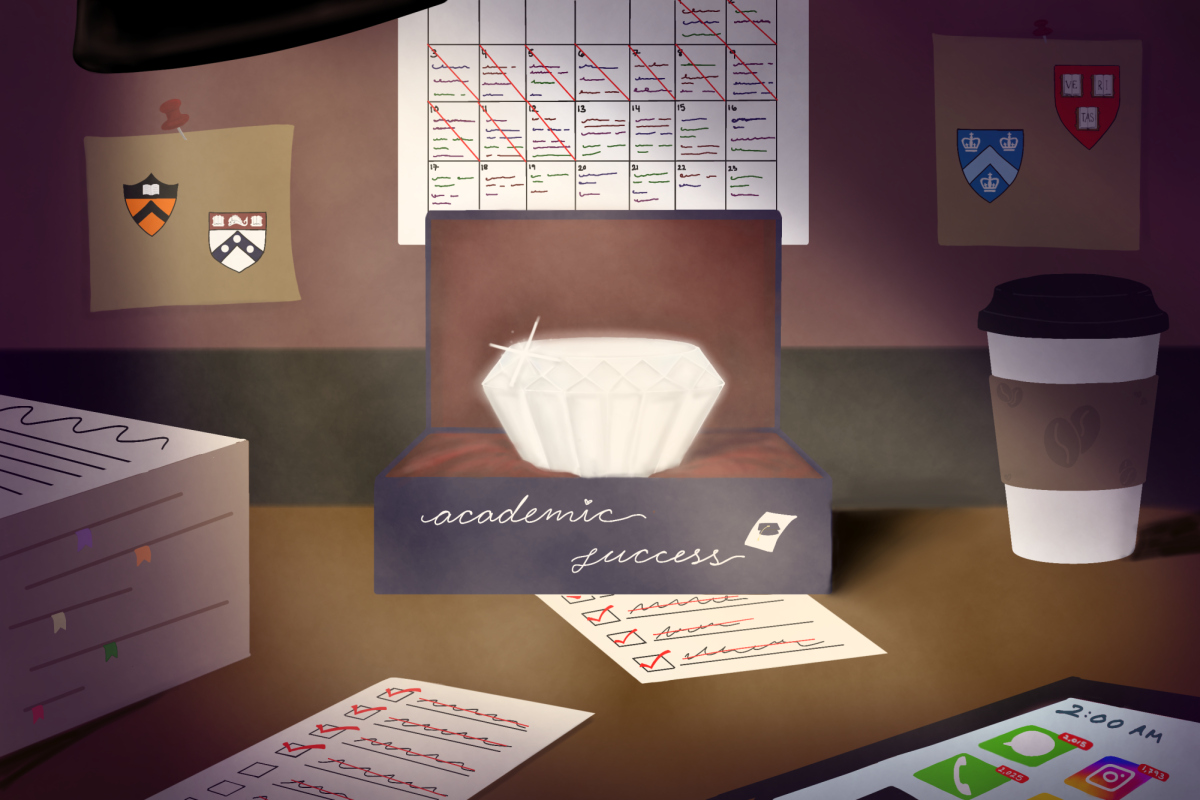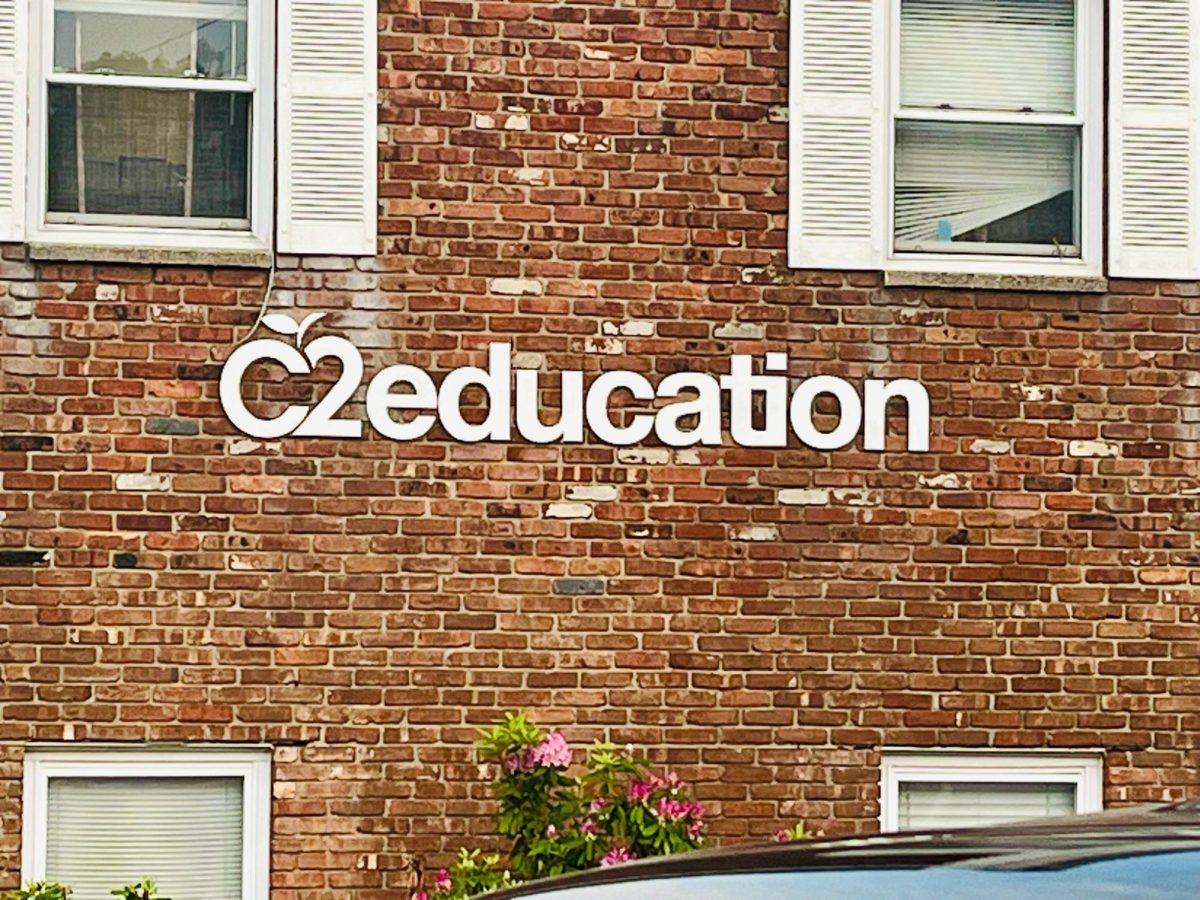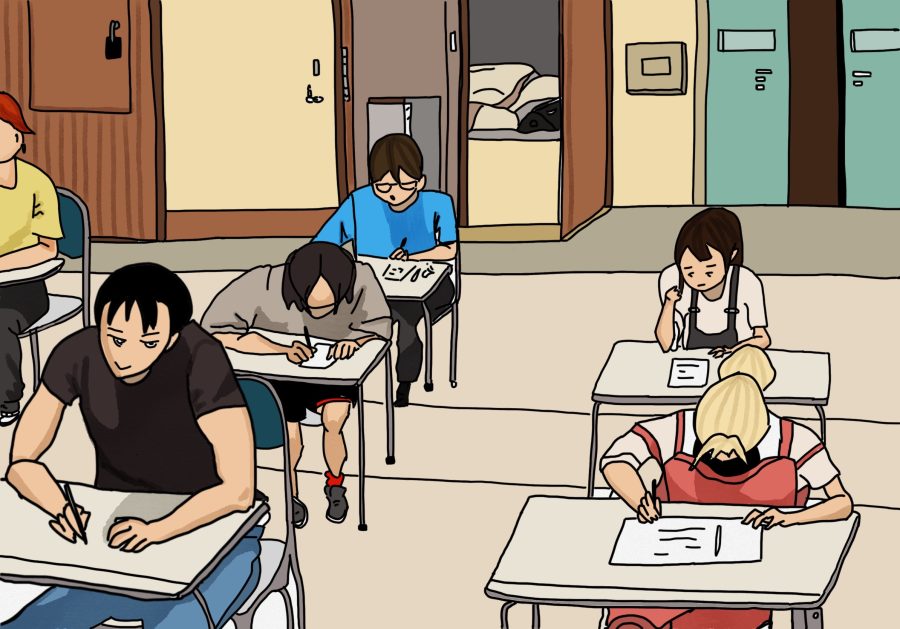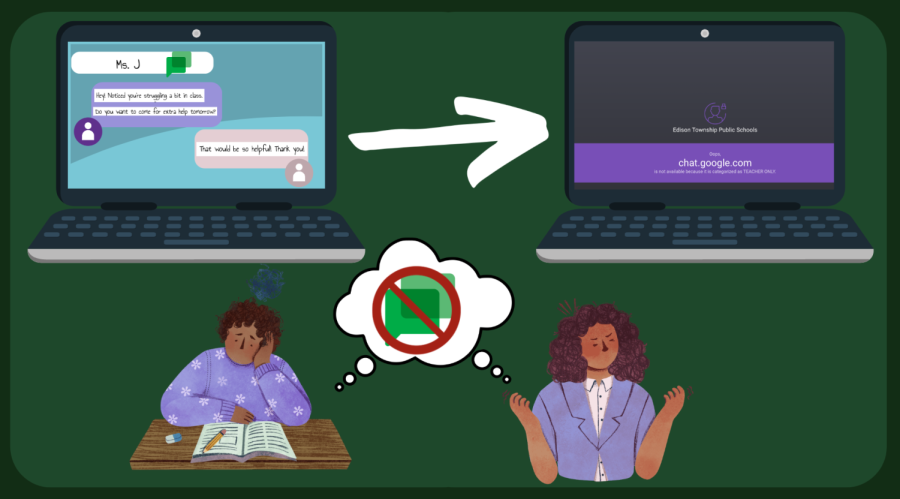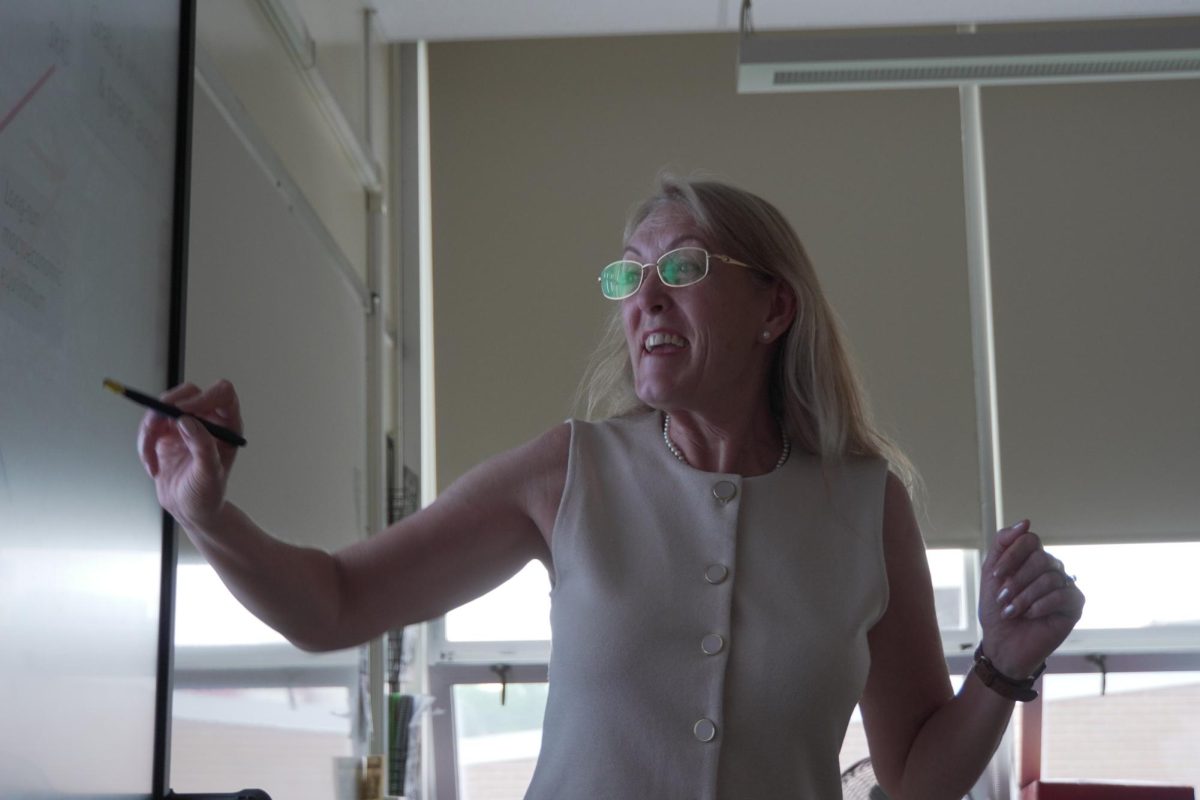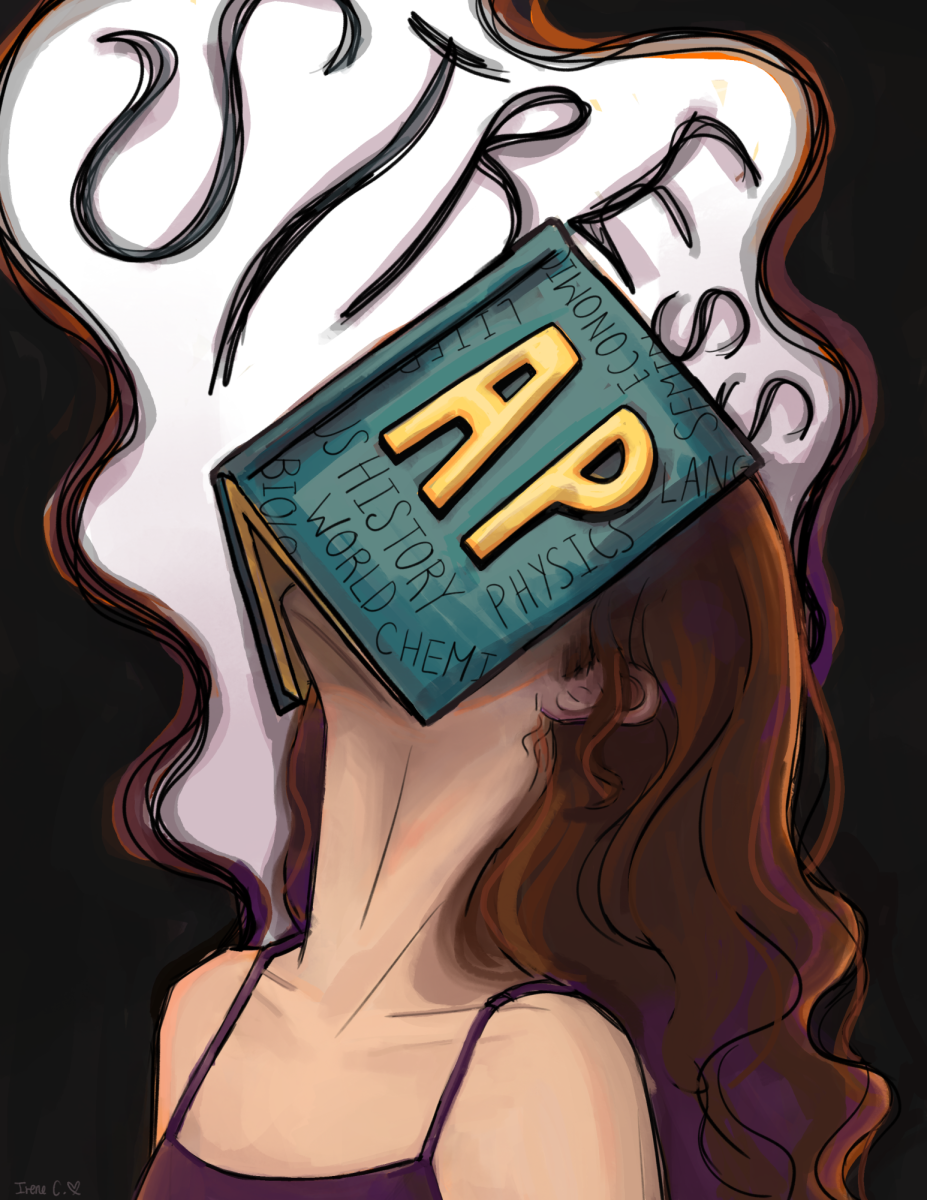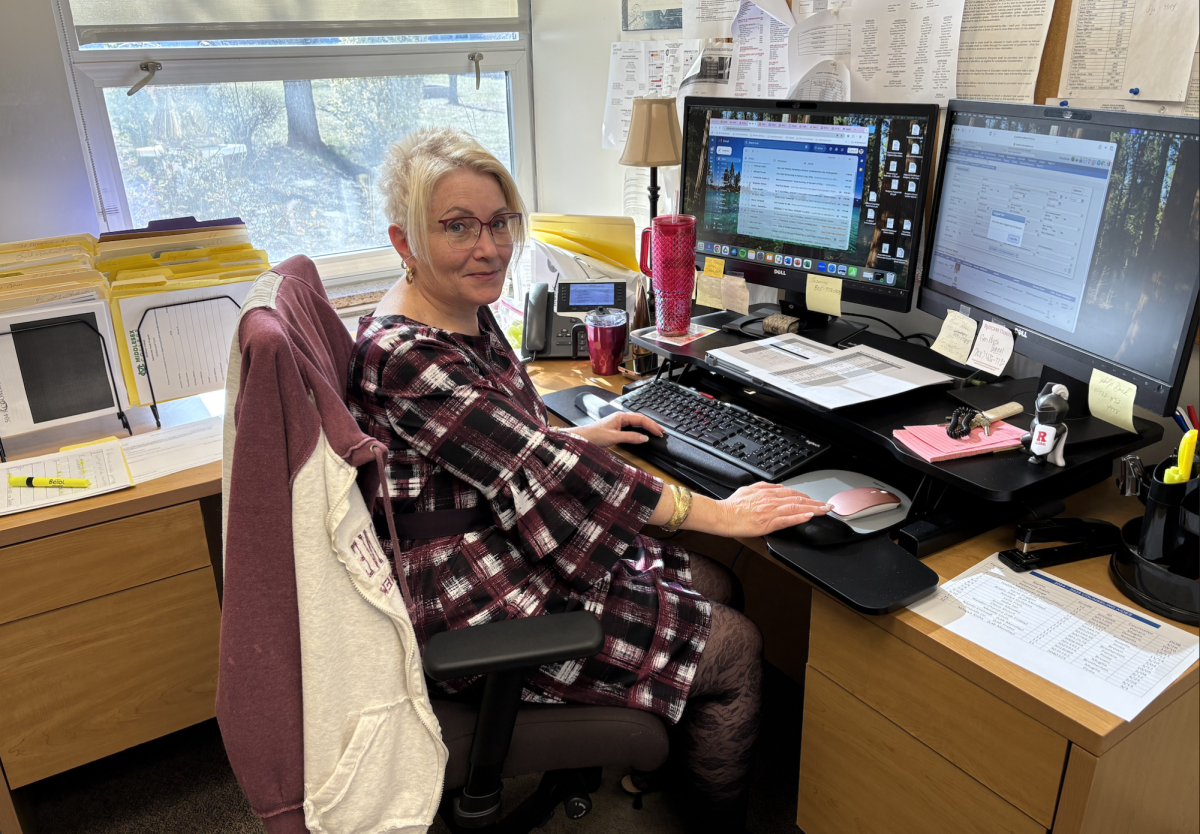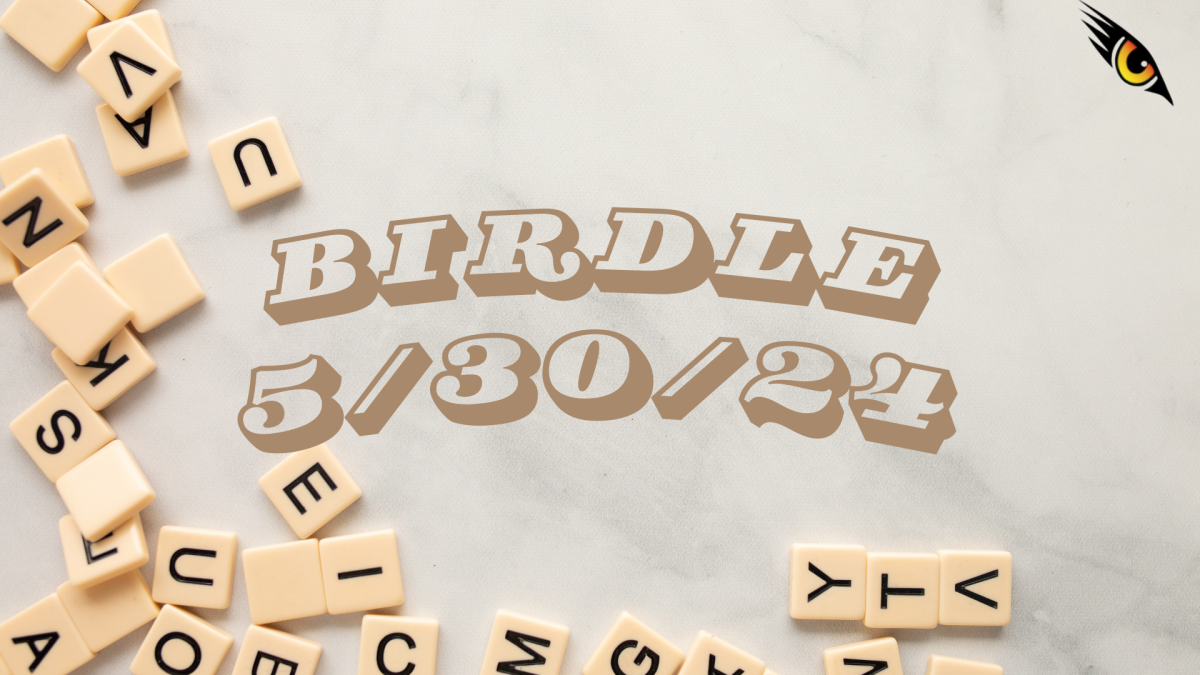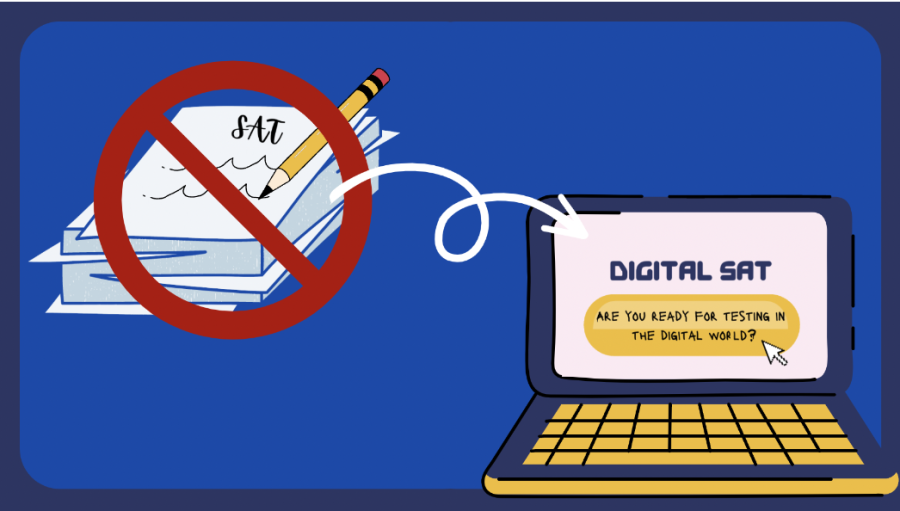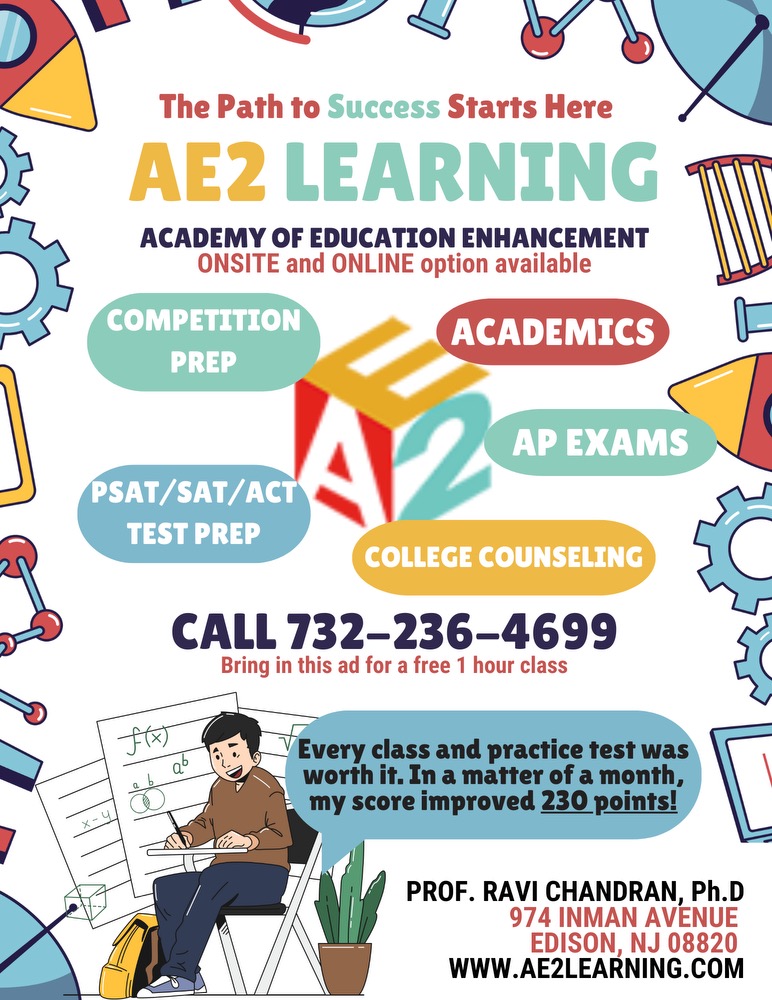Digital Dilemma Solved: SATs Roll Out Online Version
Testing With the Digital World
The SATs are going digital.
March 10, 2023
EHS, open up your computers, because the Scholastic Assessment Test (SAT) is going digital. In the United States, the digital SAT will be rolled out in 2024, while international students will take the digital version in March of 2023. Students with certain accommodations will be allowed to take the longer, paper-test version once the digital test rolls out.
A digital test format seems expected despite the fact that the SAT paper-and-pencil version is taking place across testing locations this Saturday, March 11.
“I would say I’m pretty surprised. But since other tests are going online, I think it was expected that they {College Board} were going to shift,” said Sharmithaa Bhavani Maheshswaran ‘26.
The digital test will have various changes, including a shorter exam duration, as the test length is going from 3 hours and 15 minutes to 2 hours and 14 minutes. In addition, instead of having a non-calculator and calculator section, the math section will be two sections, 35 minutes each with 22 questions, with calculators allowed in both sections. Furthermore, the English (reading and writing) portion will feature two sections formatted with individual questions related to shorter passages, rather than the previous format of groups of questions for a longer passage.
The digital SAT will still retain some characteristics of the paper test, such as being evaluated on a 1600 point scale and maintaining the benefits such as scholarships and national recognition programs through College Board. While many students assumed that the digital SAT would be taken at home, similarly to the paper SAT, the test must be taken at a testing center.
As a digital test, the SAT will be section adaptive, creating unique test forms for each student based on their performance. After each section of English and Math, the latter section will be accommodated to the student’s performance in the previous section. Essentially, the better one does on the first section, the harder questions they will get in the second section — but the more points each question will be worth. Your performance on the 2nd section determines your exact score.
The digital SAT will also allow students to get their scores quicker, receiving them within a matter of days rather than weeks. The digital test also is deemed more secure, as if a problem arises and one student’s test is compromised during the test, others will not be affected. With paper tests, if one test is compromised, this could cancel the scores of all the students within the testing center room. Digitally, the SAT will give students a unique test form, which prevents potential cheating. However, this personalization, contrasting the “standardization” of standardized tests brings questions about the fairness and equity of the test.
EHS students have mixed feelings about Digital SATs. Some students find the digital version most natural to their experiences in the classroom and in preparation.
“I would rather take the digital test when I take the SAT in two years,” said Sydney Huertas ‘26. “At my old school, I had to take standardized tests on paper, and I feel my performance was hindered taking it on paper. I think the online format is easier to adjust because we are so used to working online.”
“You are less likely to make mistakes like bubbling the wrong letter on the test,” said Risha Bhardwaj ‘26.
“For me, I personally found it hard to take the test on paper because I was adjusted to studying online,” said Pragya Singh ‘23. She believes this new SAT form will benefit students who work better online.
Like the classroom, however, some students still prefer having that tangible hard copy.
“In my experience the SAT, although more difficult and time consuming, was better for the sole reason that for me I was able to better process my answers being able to annotate and mark up the questions,” Adedoyin Ayeni ‘23 said, contrary to Singh and others. “Personally I don’t support the SAT or standardized testing but in regards to helping gauge whether a student is ready for college, I think that SAT needs more than an electronic format. I think the SAT is heading in the right direction with the adaptive section, but more change is needed to better understand a student’s educational capacity.”
With the benefits comes potential issues regarding logistics for administering the SAT.
The digital SAT will be “bring-your-own laptop.” Many concerns have been raised given that not all districts give students laptops, and some families do not have access to a home laptop. However, the Educational Testing Service (ETS), which administers tests on behalf of the College Board, will provide computers for those who do not have access to one. While registering for the SAT, students can also sign up to borrow a device for testing.
Given that testing centers at schools will have students coming from a variety of different districts, proctors and administrators will have to connect all students to the local network before taking the test. On any given testing day, there will be about 350 students who must then log onto the local network. Students from the district of the testing center will have their device (school-issued device) already connected to the school network. However, those who have brought their personal devices or out-of-district must then connect to the network. Furthermore, many classrooms within Edison High School do not have enough charging outlets to accommodate students while testing. In the event that a student’s computer dies midway during the test, and all of the outlets are currently in use, this presents a challenge for the student having a fair chance to complete the test.
“This issue leads to a lot of beforehand preparation to make sure students can connect securely to our network before taking the test,” said Mr. Matthew Zapoticzy, one of the teachers who manages preparing SAT tests for students at Edison High School.
Preparing students for the SAT will also need to be adjusted, given the “logistical nightmare” of connecting hundreds of students to a safe and secure network. For example, College Board will now be using a platform called Bluebook to take the digital SATs and digital AP exams.
“College Board has stated that familiarity with the Bluebook platform is critical. They have created an SAT Suite of Assessments site with all of the specifics. Our Edison course has been implementing the Khan Academy site for a comprehensive teacher/student experience as recommended by the College Board. We will continue to do so this summer,” states Ms. Elizabeth Lell, the high school Mathematics supervisor for the Edison School District.
With this standardized testing movement, teachers acknowledge the need to change within their own classrooms to better prepare students for digital tests. Within the past years, more standardized tests are being conducted online, such as many AP exams, and the ACT. This trend will continue to grow in the coming years.
“I think that now is the time for teachers to shift their assessments online to help prepare our students for the digital SAT and other standardized tests. It’s necessary that we as teachers make sure students are comfortable testing online so that they can perform well,” said Zapoticzy.







